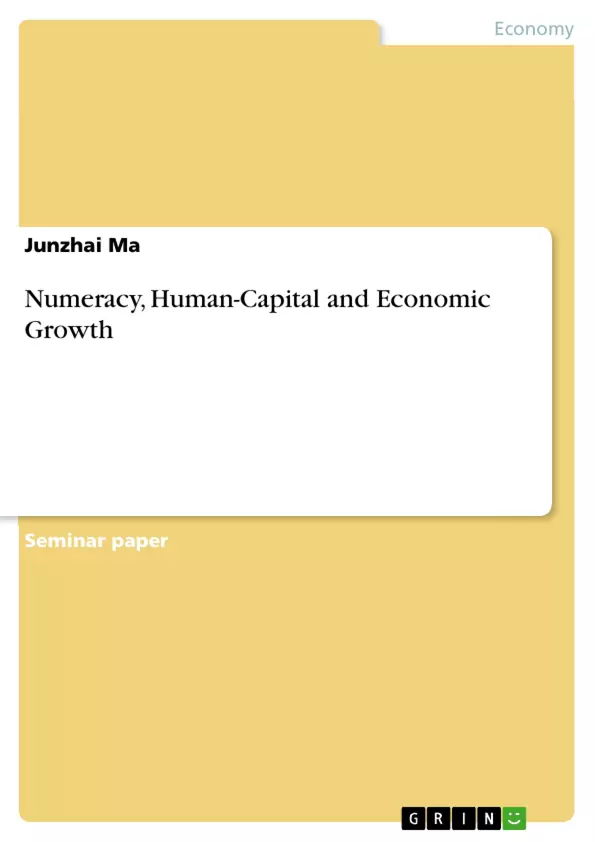Numeracy together with literacy is a basic element of human capital. Recently some international tests were conducted to make comparisons of the numeracy level among different countries.
Human capital is a long term economic growth factor. To quantify human capital, various indicators are composed: adult literacy rate, school enrolment rate, etc. These human capital indicators facilitate researchers to analyze the correlation between human capital quality and economic performance of a certain economy. Age heaping, an indicator normally used in demography to check the reliability of a census, is a possible human capital indicator. It can reflect the numeracy level of the researched population. It is shown that for little educated populations, age heaping is a possible human capital indicator, which reflects the human capital level of the researched population.
Inhaltsverzeichnis (Table of Contents)
- Introduction
- Numeracy
- Human capital
- Human capital indicator
- Education indicators
- Adult literacy rate
- Combined gross enrolment ratio
- Numeracy
- Age heaping
- Education indicators
- Correlation between human capital and economic performance
- Correlation between adult literacy rate and economic performance
- Correlation between combined gross enrolment ratio and economic performance
- Correlation between numeracy and economic performance
- Age heaping as an numeracy indicator and its correlation with economic performance
- Conclusion
Zielsetzung und Themenschwerpunkte (Objectives and Key Themes)
This paper aims to investigate the relationship between human capital, particularly numeracy, and economic growth. It explores the concept of numeracy, its significance in the context of human capital development, and its correlation with economic performance.
- The concept of numeracy and its role in human capital development
- The measurement and quantification of human capital using various indicators
- The correlation between different human capital indicators and economic performance
- The potential of age heaping as a human capital indicator
- The importance of human capital investment for economic growth
Zusammenfassung der Kapitel (Chapter Summaries)
- Introduction: Introduces the paper's focus on numeracy and its connection to human capital, emphasizing its importance for economic growth. It discusses the concept of human capital and the need for measurable indicators.
- Numeracy: Explores the definition and history of the term "numeracy," contrasting it with literacy. It discusses its growing recognition as a core skill, particularly in the context of modern, computerized societies.
- Human Capital: Defines human capital as the knowledge and skills acquired through education, training, and experience. It highlights historical perspectives on the importance of human capital from economists like Adam Smith and Alfred Marshall, and traces the development of formal human capital theory in the 1960s.
- Human Capital Indicator: Presents two groups of indicators used to measure human capital: education indicators and health indicators. It focuses on education indicators, including literacy rate, school enrollment rates, and the combined gross enrollment ratio.
- Correlation between Human Capital and Economic Performance: Examines the relationship between various human capital indicators and economic performance, including the correlation between adult literacy rate, combined gross enrolment ratio, and numeracy with economic growth. It also explores the potential of age heaping as a numeracy indicator and its correlation with economic performance.
Schlüsselwörter (Keywords)
The main keywords and focus topics of this paper include: numeracy, human capital, economic growth, education indicators, adult literacy rate, combined gross enrollment ratio, age heaping, correlation, economic performance, and human capital investment.
- Quote paper
- Junzhai Ma (Author), 2005, Numeracy, Human-Capital and Economic Growth, Munich, GRIN Verlag, https://www.grin.com/document/346530



